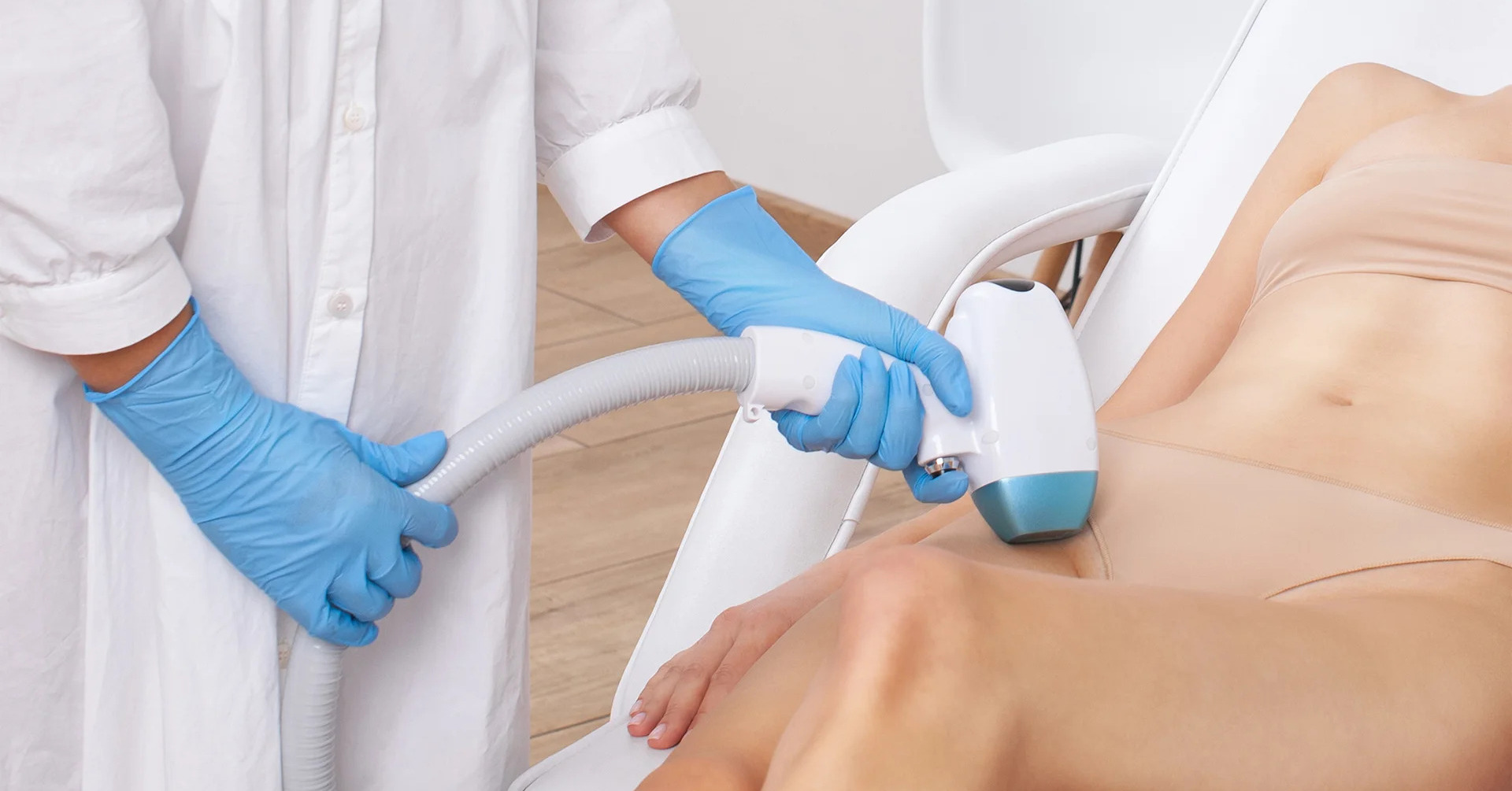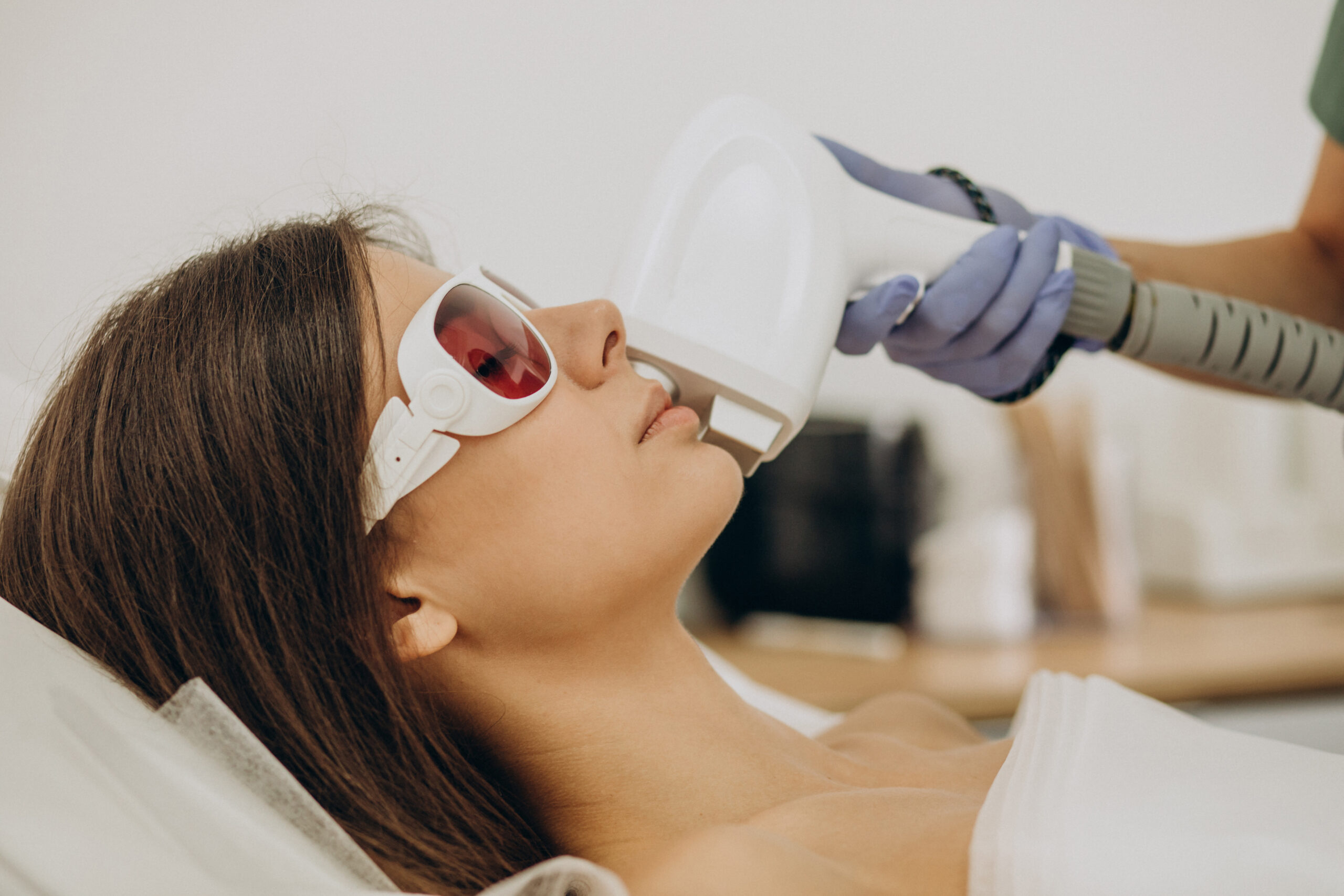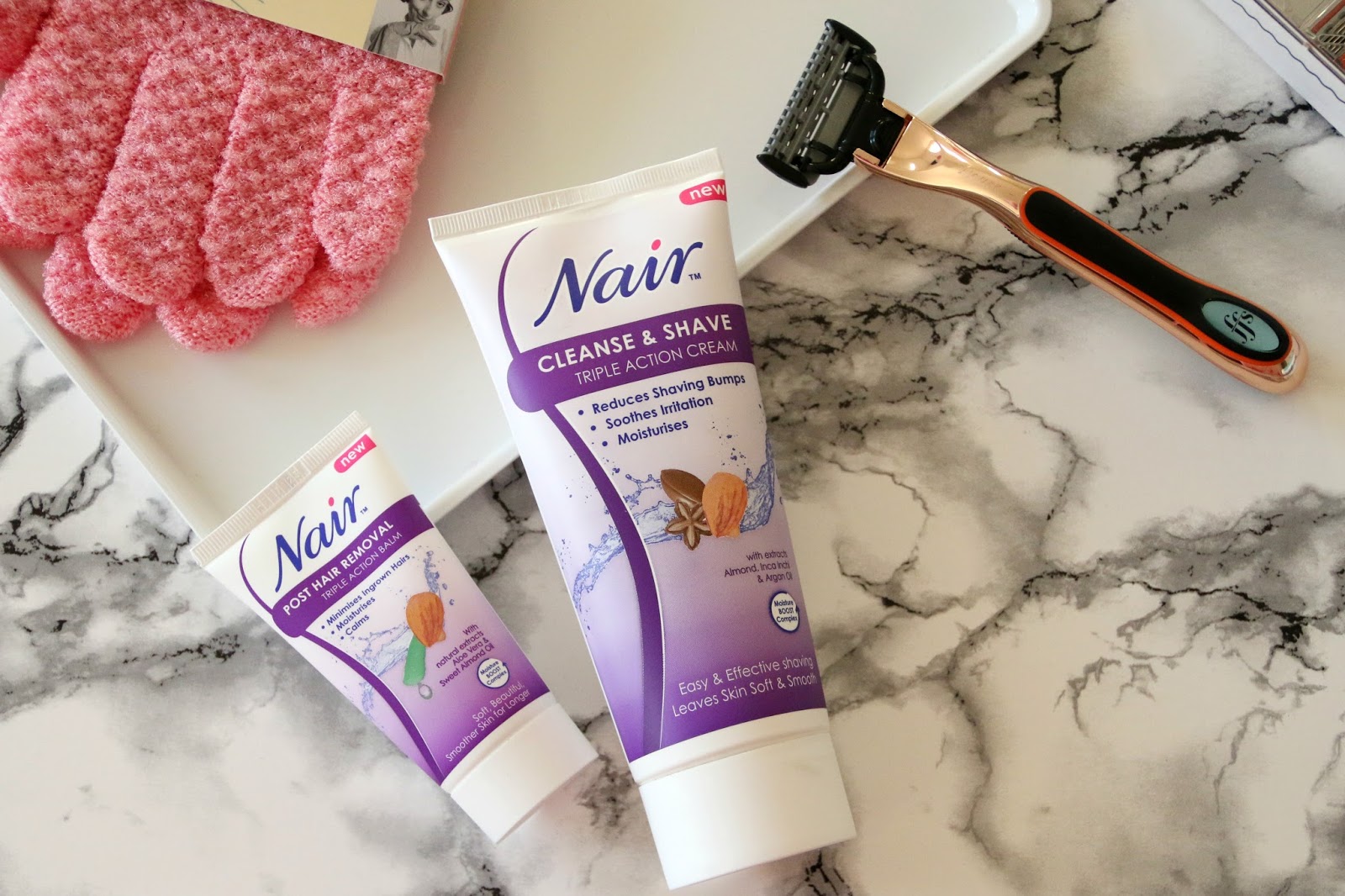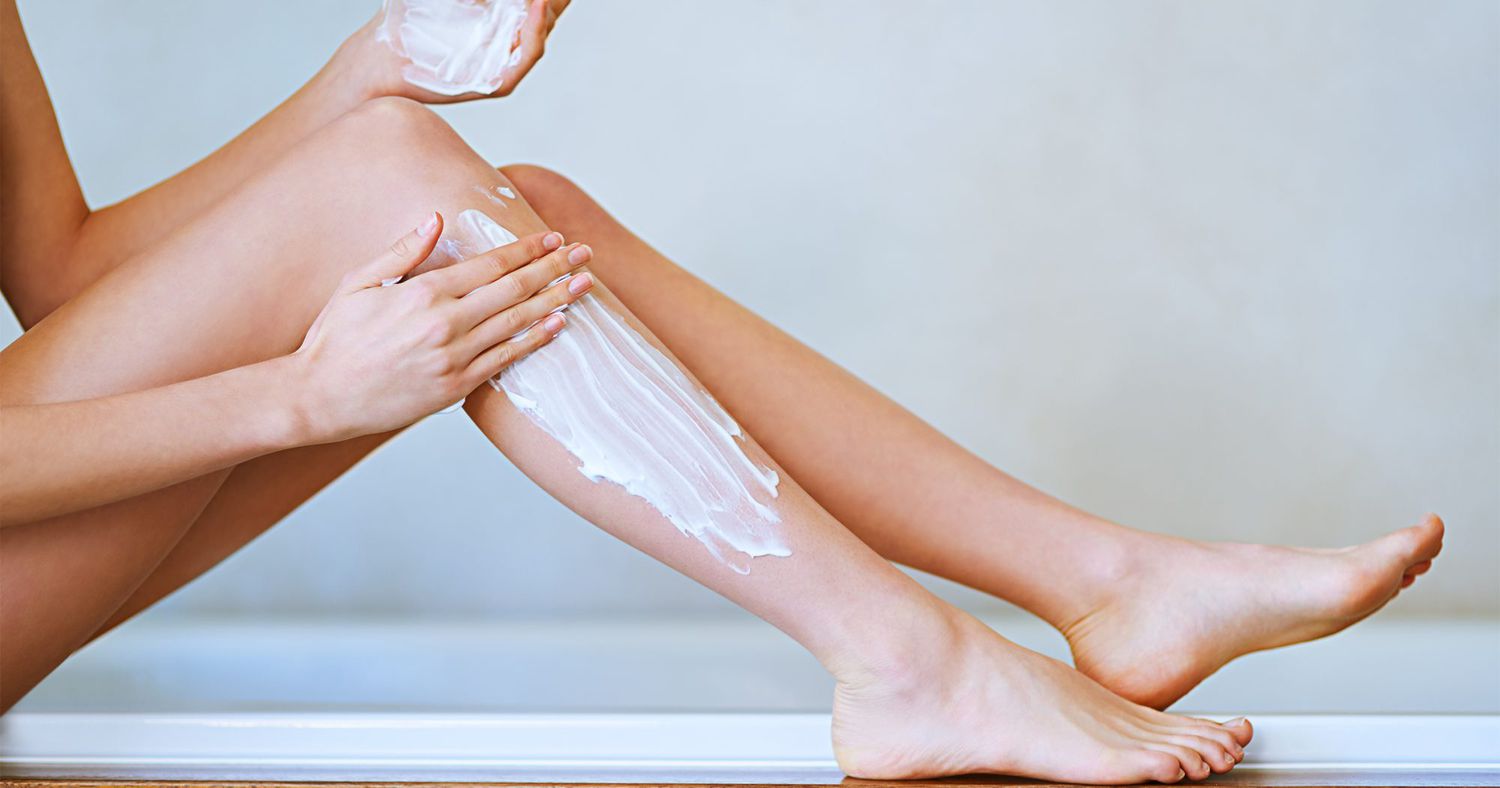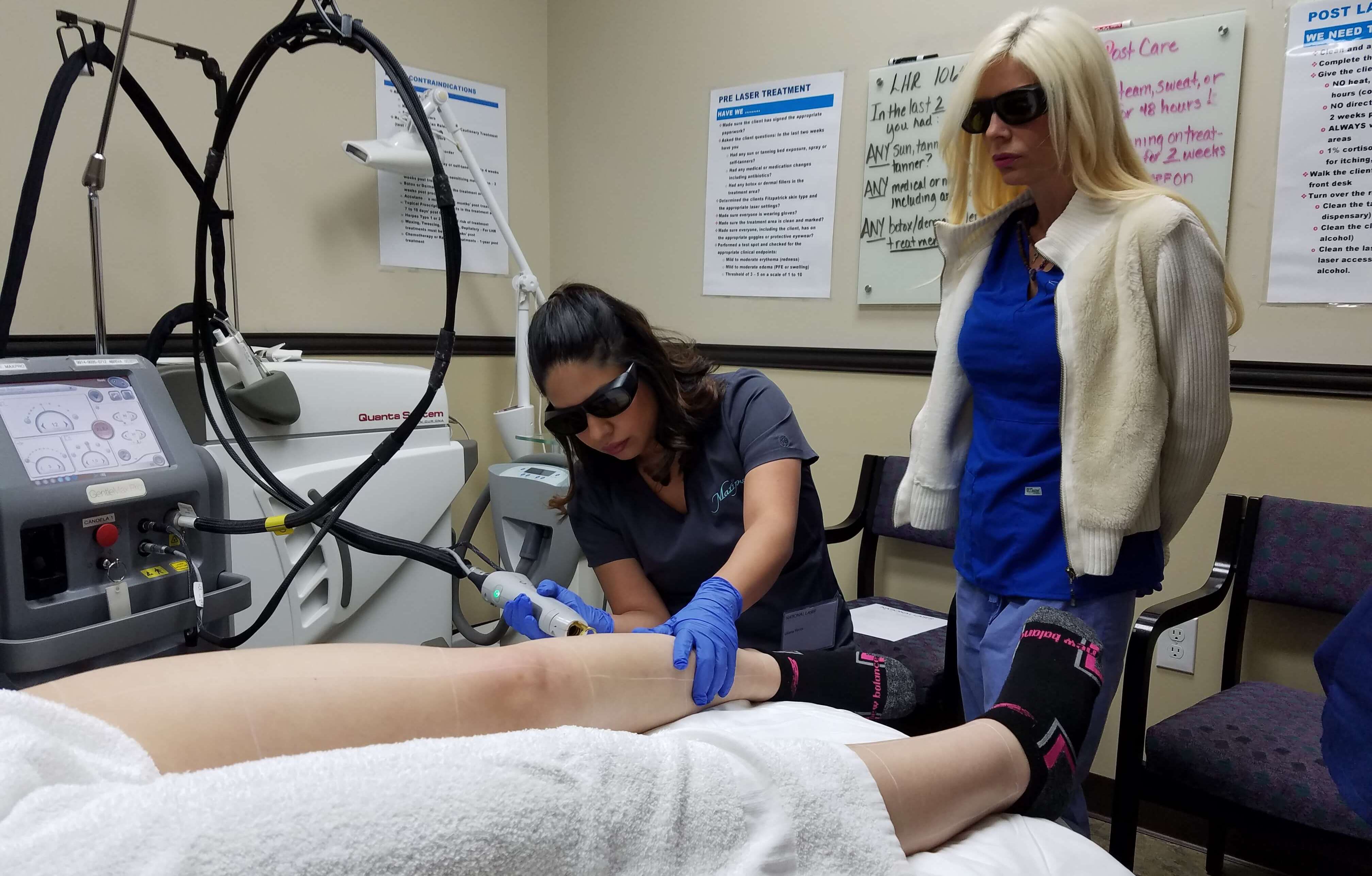Home>How-to Guides>For Women>How To Use At Home Laser Hair Removal


For Women
How To Use At Home Laser Hair Removal
Modified: August 2, 2023
Discover the ultimate guide on how to use at home laser hair removal for women. Say goodbye to unwanted hair with this convenient and effective solution.
(Many of the links in this article redirect to a specific reviewed product. Your purchase of these products through affiliate links helps to generate commission for Under-tec.com, at no extra cost. Learn more)
Table of Contents
- Introduction
- Understanding At Home Laser Hair Removal
- Choosing the Right At Home Laser Hair Removal Device
- Preparing for At Home Laser Hair Removal
- Performing At Home Laser Hair Removal
- Post-Treatment Care and Maintenance
- Potential Side Effects and Risks of At Home Laser Hair Removal
- Frequently Asked Questions (FAQs)
- Conclusion
Introduction
Welcome to the world of at-home laser hair removal! Say goodbye to the never-ending cycle of shaving, waxing, and plucking. With the advancements in technology, you can now enjoy long-lasting hair removal from the comfort of your own home.
At-home laser hair removal devices are a convenient and cost-effective alternative to salon treatments. These devices use targeted laser energy to disable hair follicles, resulting in a reduction in hair growth over time. They are designed to be safe and easy to use, making them suitable for both beginners and experienced users.
In this comprehensive guide, we will take you through everything you need to know about at-home laser hair removal. From understanding the process and choosing the right device to preparing for the treatment and post-treatment care, we’ve got you covered.
Whether you’re tired of constantly shaving your legs, want to get rid of unwanted facial hair, or simply desire smoother skin, at-home laser hair removal can be the solution you’ve been looking for. Let’s dive in and explore the world of at-home laser hair removal together.
Understanding At Home Laser Hair Removal
At home laser hair removal works on the principle of selective photothermolysis, which involves targeting the hair follicles with intense pulses of laser light. The melanin in the hair follicles absorbs the light, which then converts to heat energy. This heat damages the hair follicles, inhibiting their ability to grow new hair.
It’s important to note that at-home laser hair removal devices are not suitable for everyone. They work best on those with fair to medium skin tones and dark hair. This is because the laser energy is attracted to the pigment in the hair follicle, making it less effective on light-colored or gray hair. Additionally, darker skin tones may be prone to pigmentation changes or burns from the laser.
Before starting at-home laser hair removal, it’s crucial to carefully read the manufacturer’s instructions and safety guidelines. Each device may have specific instructions for use, including recommended treatment areas, the number of sessions required, and any precautions. It’s vital to follow these instructions to ensure both safety and optimal results.
While at-home laser hair removal devices can be effective in reducing hair growth, it’s important to understand that they are not permanent hair removal solutions. The results vary for each individual, but most users experience a significant reduction in hair growth over time. Regular treatments are typically needed to maintain the desired results.
It’s also worth noting that at-home laser hair removal devices are not suitable for certain areas, such as the eyebrows or genital areas. These delicate areas should be treated by a professional to avoid any potential risks.
Now that we have a basic understanding of at-home laser hair removal, let’s move on to the next section and explore how to choose the right device for your needs.
Choosing the Right At Home Laser Hair Removal Device
With a wide range of at-home laser hair removal devices available on the market, finding the right one for your needs may seem overwhelming. However, by considering a few key factors, you can make an informed decision that will help you achieve the best results.
The first factor to consider is your skin tone and hair color. Not all devices are suitable for every skin and hair type. Some devices are specially designed for fair to medium skin tones with dark hair, while others may be effective on a wider range of skin tones and hair colors. Make sure to check the product specifications and ensure that the device is compatible with your skin and hair.
Another important factor to consider is the safety features of the device. Look for devices that have built-in skin sensors to analyze your skin tone and adjust the energy level accordingly. This helps to minimize the risk of burns or skin damage. Additionally, choose devices that have a skin contact sensor, which ensures that the laser will only be activated when the device is in proper contact with the skin.
Consider the treatment area of the device. Some devices are more suitable for larger areas like legs and arms, while others are designed for smaller areas like the face or bikini line. Assess your specific needs and choose a device that is convenient for the areas you want to target.
It’s also important to consider the lifespan and maintenance requirements of the device. Look for devices with a sufficient number of flashes or pulses to ensure that you can complete the recommended number of treatments. Additionally, check if the device requires any regular maintenance, such as bulb replacements or cleaning, and factor in the associated costs.
Finally, take into account the overall cost of the device. While at-home laser hair removal devices can be a cost-effective alternative to professional treatments, they do come with an upfront investment. Compare the prices of different devices and consider the long-term benefits and savings they offer.
By considering these factors, you can narrow down your options and choose a device that is tailored to your specific needs. In the next section, we will discuss how to prepare for at-home laser hair removal to maximize safety and effectiveness.
Preparing for At Home Laser Hair Removal
Before starting your at-home laser hair removal treatments, it’s essential to properly prepare your skin and ensure that you follow the necessary precautions. By doing so, you can maximize the effectiveness of the treatment and minimize the risk of any adverse effects.
The first step in preparing for at-home laser hair removal is to shave the treatment area. This helps to ensure that the laser energy is targeted directly at the hair follicles and not wasted on hair above the skin’s surface. Use a clean and sharp razor to achieve a close shave, and avoid using any creams or lotions that may interfere with the laser’s efficacy.
It’s important to avoid sun exposure before and after the treatment. Excessive sun exposure can make your skin more sensitive and prone to damage during the laser hair removal process. If you have a recent tan or sunburn, it’s recommended to wait until your skin returns to its normal state before using the laser device.
Before using the at-home laser hair removal device, it’s essential to conduct a patch test on a small area of your skin. This allows you to check for any adverse reactions or sensitivities to the laser energy. If you experience any discomfort, redness, or irritation during the patch test, it’s best to consult a dermatologist before proceeding with the full treatment.
Make sure to thoroughly clean and dry the treatment area before using the device. Remove any oils, lotions, or makeup from the skin to ensure proper contact between the device and the skin’s surface. This will help to maximize the effectiveness of the laser energy.
It’s also crucial to read and follow the instructions provided with your specific at-home laser hair removal device. Each device may have specific usage guidelines, such as recommended treatment times, energy levels, and intervals between sessions. Adhering to these guidelines will help you achieve the best possible results.
By preparing your skin properly and following the necessary precautions, you can ensure a safe and effective at-home laser hair removal experience. In the next section, we will delve into the process of performing at-home laser hair removal.
Performing At Home Laser Hair Removal
Now that you have prepared your skin, it’s time to start performing at-home laser hair removal. Follow these steps to ensure a successful treatment:
- Choose a comfortable and well-lit area: Find a space in your home where you can comfortably perform the treatment without distractions. Make sure the area is well-lit so that you can clearly see the treatment area.
- Plug in and power on the device: Ensure that your at-home laser hair removal device is fully charged or connected to a power source. Follow the manufacturer’s instructions to power on the device.
- Select the appropriate energy level: Most devices allow you to adjust the energy level based on your comfort and skin sensitivity. Start with a lower energy level and gradually increase it as needed. It is important to avoid using the highest energy level immediately, as it may cause skin irritation.
- Position the device and begin treatment: Place the treatment window of the device firmly against your skin. Ensure that the entire window is in contact with the skin and press the button to activate the laser. Glide the device smoothly over the treatment area, overlapping each pass slightly for optimal coverage.
- Pay attention to the treatment intensity and duration: Different devices may have specific recommendations regarding how many pulses or flashes to use per treatment. Follow the guidelines provided in the device’s user manual to ensure you are using the appropriate intensity and duration for each area.
- Take breaks if necessary: If you experience any discomfort or if the treatment area becomes too hot, take a short break. Allow the device and your skin to cool down before continuing with the treatment.
- Repeat the treatment as recommended: Most at-home laser hair removal devices require multiple treatments to achieve the desired results. Follow the recommended treatment schedule provided with your device. Typically, treatments are spaced out every few weeks to allow for proper hair regrowth and subsequent treatment.
Remember to be patient and consistent with your at-home laser hair removal treatments. Results may not be immediate, and it may take a few months of regular treatments to see a significant reduction in hair growth.
Lastly, always monitor your skin during and after the treatment. If you experience any severe pain, discomfort, or unusual reactions, discontinue use and consult a healthcare professional.
In the next section, we will discuss post-treatment care and maintenance to help you achieve the best possible long-term results.
Post-Treatment Care and Maintenance
Congratulations on completing your at-home laser hair removal treatment! Now, it’s important to follow proper post-treatment care and maintenance to ensure the best possible results and long-term success.
After each session, it’s normal to experience some mild redness or irritation in the treated area. This usually subsides within a few hours. However, if you feel discomfort, you can apply a cold compress or aloe vera gel to soothe the skin. Avoid exposing the treated area to excessive heat or sunlight for at least 24 hours.
As your skin may be more sensitive after the treatment, it’s essential to protect it from the harmful effects of the sun. Apply a broad-spectrum sunscreen with a high SPF to the treated area whenever you are exposed to sunlight. This helps to prevent pigmentation changes and keeps your skin healthy.
Avoid any activities that may irritate or damage the treated area, such as excessive sweating, hot baths, or abrasive scrubs. Treat your skin gently and allow it to heal naturally. Avoid shaving, waxing, or plucking the treated area between sessions, as these methods can disrupt the hair growth cycle and interfere with the laser’s effectiveness.
Continue with your regular treatment schedule as recommended by the device manufacturer. Consistency is key when it comes to at-home laser hair removal. Follow the recommended intervals between sessions to allow for optimal hair regrowth and subsequent treatments.
Throughout the course of your treatments, regularly assess your progress. Keep track of the reduction in hair growth and take note of any changes or areas that may require additional attention. Adjust your treatment plan as needed or consult a dermatologist for guidance.
For long-term maintenance, some devices may recommend occasional touch-up treatments even after achieving your desired results. These touch-up sessions help to ensure that any hair regrowth is effectively targeted and minimized.
It’s also important to properly maintain your at-home laser hair removal device. Follow the manufacturer’s instructions for cleaning and storing the device. Some devices may require bulb replacements or maintenance to ensure their continued effectiveness.
By following these post-treatment care and maintenance guidelines, you can maximize the benefits of your at-home laser hair removal treatments and enjoy smooth, hair-free skin for a longer duration.
Now that we’ve covered post-treatment care, let’s move on to the next section to address potential side effects and risks associated with at-home laser hair removal.
Potential Side Effects and Risks of At Home Laser Hair Removal
While at-home laser hair removal is generally safe and effective, it’s important to be aware of the potential side effects and risks associated with the treatment. Understanding these risks allows you to make an informed decision and take appropriate precautions.
One of the most common side effects of at-home laser hair removal is temporary skin irritation. This can manifest as redness, swelling, or a mild burning sensation in the treated area. These symptoms usually subside within a few hours or days. Applying a cool compress, aloe vera gel, or a soothing cream can help alleviate these temporary side effects.
Skin pigmentation changes can also occur, especially in individuals with darker skin tones. These changes may present as either hyperpigmentation (darkening of the skin) or hypopigmentation (lightening of the skin). To minimize the risk of pigmentation changes, it’s crucial to follow proper treatment guidelines and avoid excessive sun exposure before and after the treatment.
Skin burns can occur if the device is used improperly or at an intensity level that is too high for your skin. Always start with a lower energy level and gradually increase it as tolerated. Conducting a patch test prior to treatment can help identify any potential skin sensitivities or adverse reactions.
In some cases, at-home laser hair removal may lead to the activation or exacerbation of certain skin conditions, such as herpes or eczema. If you have any pre-existing skin conditions, it’s essential to consult with a healthcare professional before starting the treatment.
Eye injury is another potential risk if proper eye protection is not used during treatment. Ensure that you and anyone in the vicinity of the treatment area wears protective eyewear to prevent any accidental exposure to the laser light.
It’s important to note that at-home laser hair removal devices are not recommended for use on certain areas, such as the eyebrows, as they can cause eye injury. Additionally, they should not be used on tattoos, moles, or areas with open wounds or infections.
If you have any concerns or experience severe or prolonged side effects from at-home laser hair removal, it’s essential to seek advice from a healthcare professional or dermatologist. They can provide personalized guidance and ensure your safety throughout the treatment process.
Now that we have discussed the potential side effects and risks, let’s move on to the next section where we will address some frequently asked questions about at-home laser hair removal.
Frequently Asked Questions (FAQs)
1. Is at-home laser hair removal safe?
When used according to the manufacturer’s instructions, at-home laser hair removal devices are generally safe. However, it’s important to follow proper safety precautions and consult a healthcare professional if you have any concerns or pre-existing skin conditions.
2. How long does it take to see results from at-home laser hair removal?
Results vary depending on the individual and the device used. Most people start to see a reduction in hair growth after a few treatments, with more significant results achieved after several months of consistent treatment.
3. Does at-home laser hair removal work on all hair and skin types?
At-home laser hair removal tends to work best on fair to medium skin tones with dark hair. It’s less effective on light-colored or gray hair and may not be suitable for very dark or black skin tones.
4. How often should I use the at-home laser hair removal device?
The recommended treatment schedule varies depending on the device. Typically, treatments are spaced every few weeks to allow for proper hair regrowth and subsequent treatments. Follow the guidelines provided with your specific device.
5. Can I use at-home laser hair removal on my face?
Some devices are specifically designed for facial hair removal, while others are not recommended for use on the face. Check the device specifications and follow the manufacturer’s guidance regarding treatment areas.
6. Is at-home laser hair removal permanent?
At-home laser hair removal can lead to long-term hair reduction, but it’s not considered a permanent solution. Regular maintenance treatments may be required to maintain the desired results.
7. Can pregnant or breastfeeding women use at-home laser hair removal?
It is generally recommended to avoid using at-home laser hair removal devices during pregnancy or while breastfeeding. Consult with a healthcare professional for personalized advice.
8. Can I use at-home laser hair removal if I have tattoos or moles?
No, it’s not recommended to use at-home laser hair removal devices on tattoos or moles as they can cause skin damage or alter the appearance of the tattoo.
9. Can at-home laser hair removal be used by men?
Yes, at-home laser hair removal devices can be used by both men and women. However, check the device specifications to ensure it is suitable for your hair and skin type.
10. Are there any long-term effects of at-home laser hair removal?
At-home laser hair removal is generally safe, and there are no known long-term adverse effects. However, it’s important to follow proper safety precautions and consult with a healthcare professional if you have any concerns.
These are just some of the frequently asked questions about at-home laser hair removal. It’s always recommended to refer to the device manufacturer’s instructions and consult with a professional for personalized advice based on your specific needs and circumstances.
Conclusion
At-home laser hair removal offers a convenient and effective solution for long-lasting hair reduction in the comfort of your own home. By understanding the process, choosing the right device, and following proper safety precautions, you can achieve smooth, hair-free skin.
Remember to carefully read and follow the instructions provided with your at-home laser hair removal device. Each device may have specific usage guidelines and safety precautions to ensure optimal results and minimize the risk of side effects.
Prepare your skin properly by shaving the treatment area and avoiding sun exposure. Take the time to perform the treatment correctly, adjusting the energy level and gliding the device smoothly over the skin. Follow the recommended treatment schedule and be patient for the results to appear, as it may take several months of consistent treatments to see a significant reduction in hair growth.
After each session, practice proper post-treatment care and maintenance. Protect your skin from sun exposure, avoid activities that may irritate the treated area, and monitor your progress. If you experience severe or prolonged side effects, consult with a healthcare professional.
At-home laser hair removal is a suitable option for many individuals, but it may not be suitable for everyone. Consider factors such as your skin tone, hair color, and any pre-existing skin conditions before starting the treatment. If you have any concerns or doubts, it is always recommended to seek professional advice.
By following these guidelines and taking the necessary precautions, you can enjoy the benefits of at-home laser hair removal and say goodbye to the never-ending cycle of shaving, waxing, and plucking. Embrace the convenience and confidence that comes with smooth, hair-free skin.
